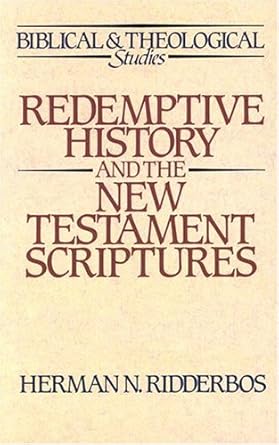Editor’s Note: Only occasionally we select an older work, as we have here, because of its significance and contribution to biblical understanding. This small book by Herman Ridderbos, originally published in Dutch in 1955 and first appearing in English in 1963, emphasizes important concepts in regard to the New Testament canon and its authority that are not often found in contemporary literature. We hope our members will enjoy this “bonus” book summary from the Books At a Glance team.
About the Author
Herman Ridderbos (1909-2007) served as Professor of New Testament Studies for over thirty years in the Theological Seminary at Kampen, the Netherlands. He became well known in America through his volume on Galatians in the New International Commentary on the New Testament, Paul and Jesus, The Coming of the Kingdom, Paul: An Outline of His Theology, and Studies in Scripture and Its Authority.
Introduction
Scholarly opinions regarding the authority of Scripture differ widely. At issue is whether it is a book of human origin merely or divine. Should it be investigated as any other book, or is it unique. That is, is Scripture revelation. More to the point, how is the answer to this question to be determined? Can biblical criticism or scientific investigation of any kind establish Scripture as authoritative revelation? Is the reader left to his own judgments, or perhaps abandoned to the witness of the Spirit?
Traditionally the church has appealed to the self-witness of the Scriptures in ascertaining its authority. The New Testament (NT) attestation of the Old Testament (OT) is important also, but given that the NT is not followed by a subsequent canon, as was the OT, we have no such advantage in determining the NT canon. And the appeal to the self-witness of Scripture, by the nature of it, is convincing only to those who already believe. Ultimately such circular reasoning is unavoidable in appeals to final authority, but we feel that further reflection is needed. Scripture was not given all at once. This revelation was spread out over time. It would seem, therefore, that Scripture’s authority can be properly understood only in relation to redemptive history. Just what is that relationship?
This is the topic taken up here. Redemptive History and the New Testament Scriptures.
Table of Contents
1. Introduction
I. The Canon of the New Testament
A. Questions of Principle
2. Recent Reflections
3. Appeals to Luther’s Standpoint
4. The Reformed View
B. Canon and Redemptive History
5. The Apostolate
6. Tradition
7. Tradition as Scripture
8. The Redemptive-Historical Concept of the Canon
C. The Recognition of the Canon
9. The A Priori of Faith
10. The Formation of the Canon
11. The Closing of the Canon
II. The Authority of the New Testament
12. The Redemptive-Historical Character of the New Testament’s Authority
13. Kerygma (Proclamation)
14. Marturia (Witness)
15. Didachē (Teaching)
Summary
Chapter 1
The Canon of the NT
The Principle of Canon
The question of canon is often seen as a “creeping sickness” in the Protestant church. It is an uneasy question for many in that, on the one hand, it acknowledges Scripture’s prior authority, yet on the other hand it understands the church to have determined the canon. Yet the important question concerns not the length of time in reaching canonical consensus but the basis of the church’s acceptance of the canon. On what ground did the church come to recognize the 27 books as canonical?
Like all the Reformers Luther …
[To continue reading this summary, please see below....]
The remainder of this article is premium content. Become a member to continue reading.
Already have an account? Sign In
